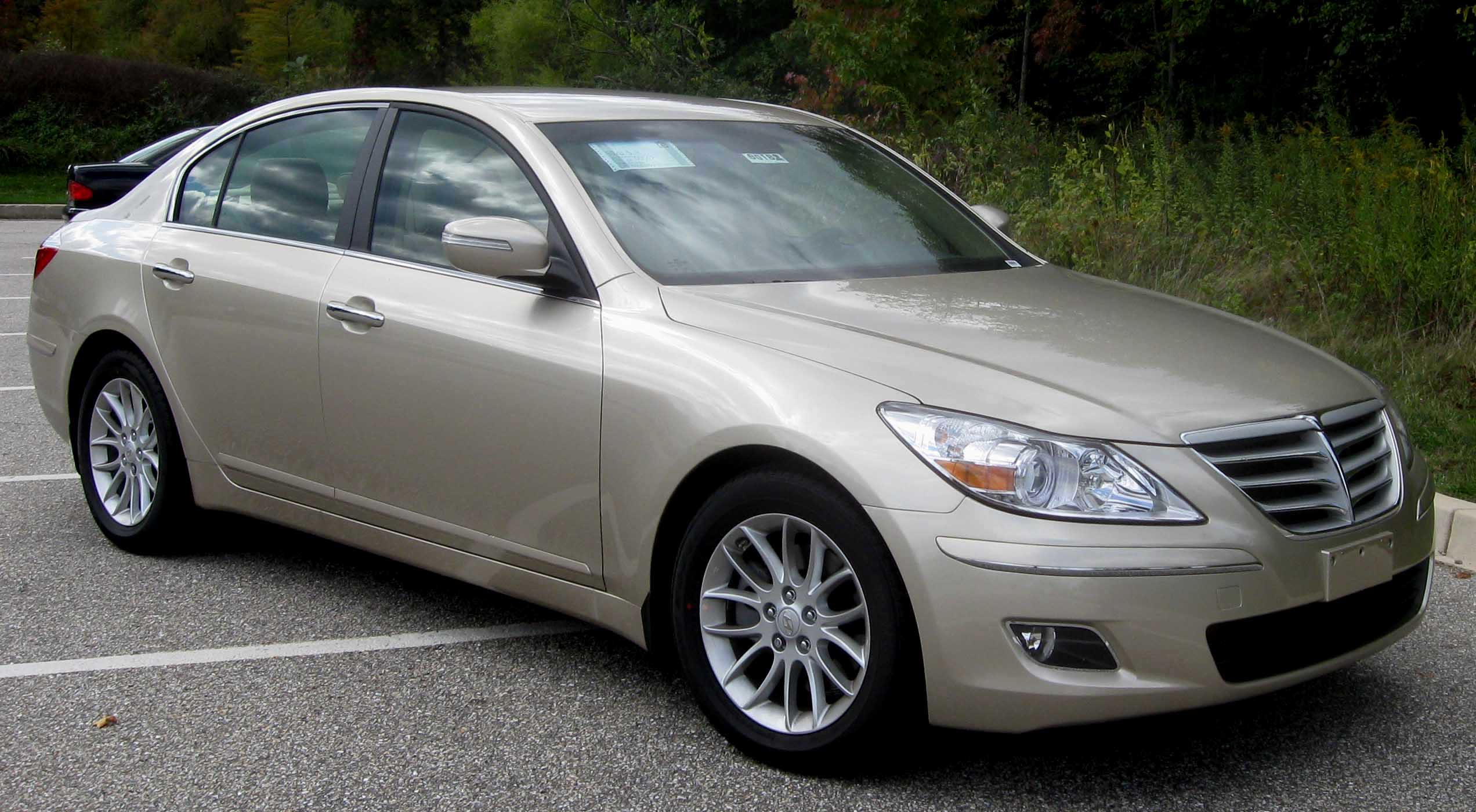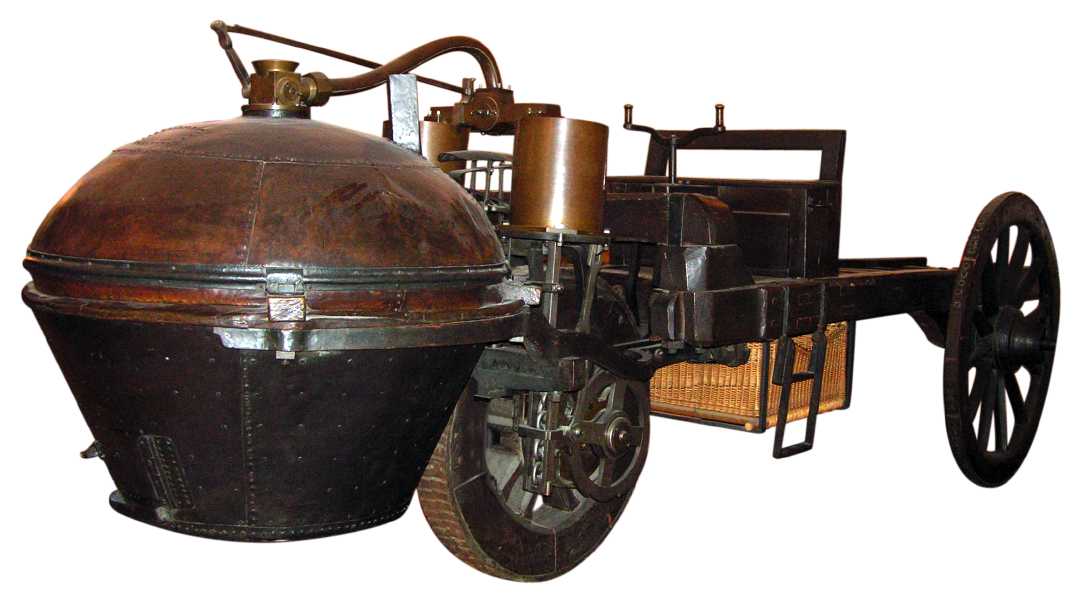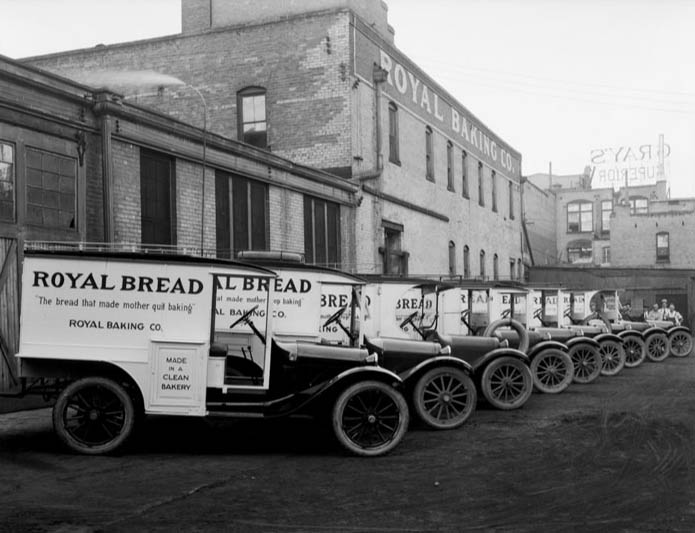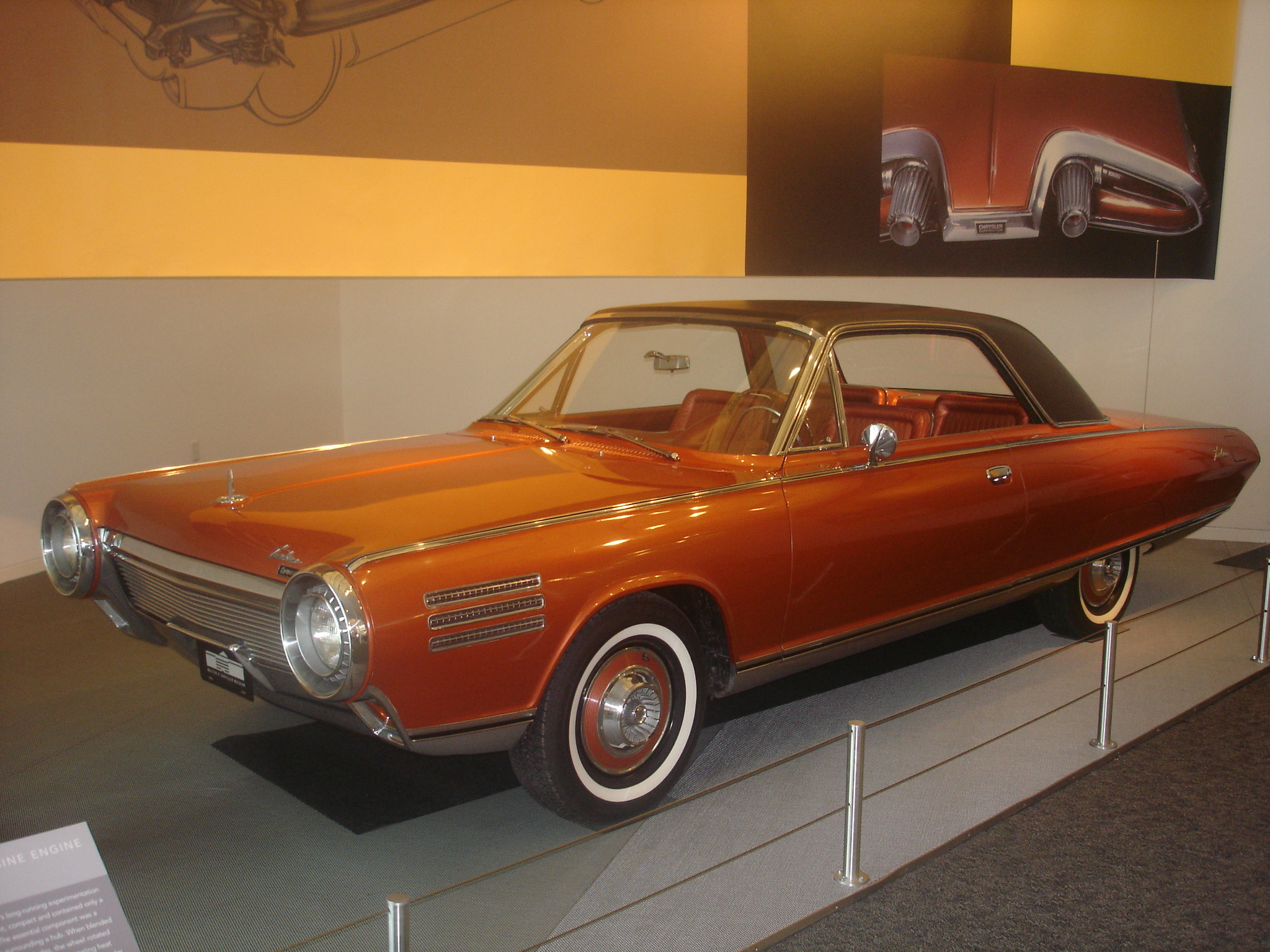|
Dodge 330
The Dodge 330 is a mid-size car marketed by Dodge for the 1962 model year as a trim level above the base Dodge Dart. For the 1963 and 1964 model years, the 330 was the base trim of the mid-size lineup. It is one of the first unibody vehicles using the B-Body. The 330 series was available in two-door or four-door sedan body designs. Dodge discontinued the 330 model name for the 1964 model year (1965 in Canada). Design Virgil Exner designed the 1962 models, while Elwood Engel revised the styling for 1963 and 1964. The car had a wheelbase and was long. There was also a higher trimmed 440 and Polara available. The base engine was the 225 Slant-Six. The 318 2bbl, 361 2bbl, 383 2bbl, 383 4bbl, and 426 4bbl were optional. As an intermediate trim level above the Dart, it came standard with a cigarette lighter, front foam cushions, and rear arm rests. The Dodge 330 Max Wedge is a 330 two-door sedan powered by the 426 Max Wedge featuring dual 4-barrel carburetors and rated at ... [...More Info...] [...Related Items...] OR: [Wikipedia] [Google] [Baidu] |
Dodge
Dodge is an American brand of automobiles and a division of Stellantis, based in Auburn Hills, Michigan. Dodge vehicles have historically included performance cars, and for much of its existence, Dodge was Chrysler's mid-priced brand above Plymouth. Founded as the Dodge Brothers Company machine shop by brothers Horace Elgin Dodge and John Francis Dodge in the early 1900s, Dodge was originally a supplier of parts and assemblies to Detroit-based automakers like Ford. They began building complete automobiles under the "Dodge Brothers" brand in 1914, predating the founding of the Chrysler Corporation. The factory located in Hamtramck, Michigan, was the Dodge main factory from 1910 until it closed in January 1980. John Dodge died from the Spanish flu in January 1920, having lungs weakened by tuberculosis 20 years earlier. Horace died in December of the same year, perhaps weakened by the Spanish flu, but the cause of death was cirrhosis of the liver. Their company was sold b ... [...More Info...] [...Related Items...] OR: [Wikipedia] [Google] [Baidu] |
Virgil Exner
Virgil Max "Ex" Exner Sr. (September 24, 1909 – December 22, 1973) was an automobile designer for several American automobile companies, most notably Chrysler and Studebaker. Exner is widely known for the "Forward Look" he created for the 1955–1963 Chrysler products and his fondness of tailfins on cars for both aesthetics and aerodynamics. Prior to the 1955 model year, Chrysler products were considered solid and well-engineered, but with dull styling. But for 1955 and 1956, Chrysler introduced the first set of cars with Exner's stylish and popular Forward Look. These models were very popular and greatly improved Chrysler's image. For 1957, Chrysler launched all-new models again, introducing cars that were long, low, wide, and featured sweeping tailfins—designs that caused a sensation within the North American auto industry. When GM designer Chuck Jordan peered through a fence—thanks to a tip he received—and spied Chrysler's soon-to-be-launched 1957 Chrysler ... [...More Info...] [...Related Items...] OR: [Wikipedia] [Google] [Baidu] |
Coupés
A coupe or coupé (, ) is a passenger car with a sloping or truncated rear roofline and typically with two doors. The term ''coupé'' was first applied to horse-drawn carriages for two passengers without rear-facing seats. It comes from the French past participle of , "cut". Some coupé cars only have two seats, while some also feature rear seats. However, these rear seats are usually lower quality and much smaller than those in the front. Furthermore, "A fixed-top two-door sports car would be best and most appropriately be termed a 'sports coupe' or 'sports coupé'". __TOC__ Etymology and pronunciation () is based on the past participle of the French verb ("to cut") and thus indicates a car which has been "cut" or made shorter than standard. It was first applied to horse-drawn carriages for two passengers without rear-facing seats. These or ("clipped carriages") were eventually clipped to .. There are two common pronunciations in English: * () – the anglicized v ... [...More Info...] [...Related Items...] OR: [Wikipedia] [Google] [Baidu] |
Mid-size Cars
Mid-size—also known as intermediate—is a vehicle size class which originated in the United States and is used for cars larger than compact cars and smaller than full-size cars. "Large family car" is a UK term and a part of the D-segment in the European car classification. Mid-size cars are manufactured in a variety of body styles, including sedans, coupes, station wagons, hatchbacks, and convertibles. Compact executive cars can also fall under the mid-size category. History The automobile that defined this size in the United States was the Rambler Six that was introduced in 1956, although it was called a "compact" car at that time. Much smaller than any standard contemporary full-size cars, it was called a compact to distinguish it from the small imported cars that were being introduced into the marketplace. By the early 1960s, the car was renamed the Rambler Classic and while it retained its basic dimensions, it was now competing with an array of new "intermediat ... [...More Info...] [...Related Items...] OR: [Wikipedia] [Google] [Baidu] |
Rear-wheel-drive Vehicles
Rear-wheel drive (RWD) is a form of engine and transmission layout used in motor vehicles, in which the engine drives the rear wheels only. Until the late 20th century, rear-wheel drive was the most common configuration for cars. Most rear-wheel drive vehicles feature a longitudinally-mounted engine at the front of the car. Layout The most common layout for a rear-wheel drive car is with the engine and transmission at the front of the car, mounted longitudinally. Other layouts of rear-wheel drive cars include front-mid engine, rear-mid engine, and rear-engine. Some manufacturers, such as Alfa Romeo, Lancia, Porsche (944, 924, 928) and Chevrolet (C5, C6, and C7 Corvettes), place the engine at the front of the car and the transmission at the rear of the car, in order to provide a more balanced weight distribution. This configuration is often referred to as a transaxle since the transmission and axle are one unit. History 1890s to 1960s Many of the cars built in the 19th cent ... [...More Info...] [...Related Items...] OR: [Wikipedia] [Google] [Baidu] |
1960s Cars
Year 196 ( CXCVI) was a leap year starting on Thursday of the Julian calendar. At the time, it was known as the Year of the Consulship of Dexter and Messalla (or, less frequently, year 949 ''Ab urbe condita''). The denomination 196 for this year has been used since the early medieval period, when the Anno Domini calendar era became the prevalent method in Europe for naming years. Events By place Roman Empire * Emperor Septimius Severus attempts to assassinate Clodius Albinus but fails, causing Albinus to retaliate militarily. * Emperor Septimius Severus captures and sacks Byzantium; the city is rebuilt and regains its previous prosperity. * In order to assure the support of the Roman legion in Germany on his march to Rome, Clodius Albinus is declared Augustus by his army while crossing Gaul. * Hadrian's wall in Britain is partially destroyed. China * First year of the Jian'an Era, during the reign of the Xian Emperor of the Han. * The Xian Emperor returns to wa ... [...More Info...] [...Related Items...] OR: [Wikipedia] [Google] [Baidu] |
Cars Discontinued In 1964
A car, or an automobile, is a motor vehicle with wheels. Most definitions of cars state that they run primarily on roads, Car seat, seat one to eight people, have four wheels, and mainly transport private transport#Personal transport, people rather than cargo. There are around one billion cars in use worldwide. The French inventor Nicolas-Joseph Cugnot built the first steam-powered road vehicle in 1769, while the Swiss inventor François Isaac de Rivaz designed and constructed the first internal combustion-powered automobile in 1808. The modern car—a practical, marketable automobile for everyday use—was invented in 1886, when the German inventor Carl Benz patented his Benz Patent-Motorwagen. Commercial cars became widely available during the 20th century. The 1901 Oldsmobile Curved Dash and the 1908 Ford Model T, both American cars, are widely considered the first mass-produced and mass-affordable cars, respectively. Cars were rapidly adopted in the US, where they replac ... [...More Info...] [...Related Items...] OR: [Wikipedia] [Google] [Baidu] |
Cars Introduced In 1962
A car, or an automobile, is a motor vehicle with wheels. Most definitions of cars state that they run primarily on roads, seat one to eight people, have four wheels, and mainly transport people rather than cargo. There are around one billion cars in use worldwide. The French inventor Nicolas-Joseph Cugnot built the first steam-powered road vehicle in 1769, while the Swiss inventor François Isaac de Rivaz designed and constructed the first internal combustion-powered automobile in 1808. The modern car—a practical, marketable automobile for everyday use—was invented in 1886, when the German inventor Carl Benz patented his Benz Patent-Motorwagen. Commercial cars became widely available during the 20th century. The 1901 Oldsmobile Curved Dash and the 1908 Ford Model T, both American cars, are widely considered the first mass-produced and mass-affordable cars, respectively. Cars were rapidly adopted in the US, where they replaced horse-drawn carriages. In Europe and other pa ... [...More Info...] [...Related Items...] OR: [Wikipedia] [Google] [Baidu] |
Dodge Vehicles
Dodge is an American brand of automobiles and a division of Stellantis, based in Auburn Hills, Michigan. Dodge vehicles have historically included performance cars, and for much of its existence, Dodge was Chrysler's mid-priced brand above Plymouth (automobile), Plymouth. Founded as the Dodge Brothers Company machine shop by brothers Horace Elgin Dodge and John Francis Dodge in the early 1900s, Dodge was originally a supplier of parts and assemblies to Detroit-based automakers like Ford Motor Company, Ford. They began building complete automobiles under the "Dodge Brothers" brand in 1914, predating the founding of the Chrysler Corporation. The factory located in Hamtramck, Michigan, was the Dodge Main, Dodge main factory from 1910 until it closed in January 1980. John Dodge died from the Spanish flu in January 1920, having lungs weakened by tuberculosis 20 years earlier. Horace died in December of the same year, perhaps weakened by the Spanish flu, but the cause of death was ci ... [...More Info...] [...Related Items...] OR: [Wikipedia] [Google] [Baidu] |
Dodge 880
__NOTOC__ Year 880 ( DCCCLXXX) was a leap year starting on Friday of the Julian calendar. Events By place Byzantine Empire * Battle of Cephalonia: A Byzantine fleet, under Admiral Nasar, is sent by Emperor Basil I to the Ionian Islands. Nasar defeats the Aghlabids in a night battle near Cephalonia (modern Greece). * May 1 – The Nea Ekklesia is inaugurated in Constantinople, by Patriarch Photius I, setting the model for all later cross-in-square Orthodox churches.Mango (1986), p. 194.Ousterhout (2007), p. 34. Europe * February 2 – Battle of Lüneburg Heath: King Louis III is defeated by the Norse Great Heathen Army at Lüneburg Heath. The Saxons are routed in a snowstorm; many drown in the river or are captured during the retreat. * Battle of Thimeon: King Louis III ("the Younger") defeats Vikings (probably Norsemen) from England, near Charleroi, north of the River Sambre. During the battle 5,000 Vikings are killed. * Battle of Fjaler: King Harald Fair ... [...More Info...] [...Related Items...] OR: [Wikipedia] [Google] [Baidu] |
Chrysler RB Engine
The Chrysler B and RB engines are a series of big-block V8 gasoline engines introduced in 1958 to replace the Chrysler FirePower (first generation Hemi) engines. The B and RB engines are often referred to as "wedge" engines because they use wedge-shaped combustion chambers; this differentiates them from Chrysler's 426 Hemi big block engines that are typically referred to as "Hemi" or "426 Hemi" due to their hemispherical shaped combustion chambers. The corporation had been seeking a smaller and lighter replacement for its FirePower engines, in part because new styling dictates meant moving the engine forward in the chassis which negatively affected weight distribution. Design Design features of the B and RB engines include 17 capscrews per cylinder head, a cylinder block that extends below the crankshaft centerline, an intake manifold not exposed to crankcase oil on the underside, stamped-steel shaft-mounted rocker arms (race versions used forged steel rockers), and a front-mou ... [...More Info...] [...Related Items...] OR: [Wikipedia] [Google] [Baidu] |
Elwood Engel
Elwood Paul Engel (February 10, 1917 – June 24, 1986) was Chrysler Corporation's design chief from 1961 until 1974. Early days Engel first joined General Motors as a student under Harley Earl's watchful eye at GM's school of design. In 1939 he met classmates Joe Oros and George W. Walker at the school. During World War II, Engel served four years in the U.S. Army as a mapmaker, in both the European and Pacific theaters of operation. He and Oros remained in touch throughout the war, and after the war when Oros took a position in Walker's design firm, he recommended that Engel be hired as well. Although Walker's firm had Nash Motors, Nash as an account, Engel worked on designs for farm equipment, women's shoes and household appliances. However, when Walker obtained a contract with Ford Motor Company in 1947 (and dumped Nash), Engel and Oros went to work full-time designing automobiles. Engel and Oros were such close friends that Oros was best man when Engel was wedded to Marguer ... [...More Info...] [...Related Items...] OR: [Wikipedia] [Google] [Baidu] |










